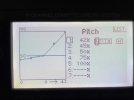Hey there Randy, do you have a link for a simulator i can use for a spektrum TX ???
I'll let you find the source since what I see in the USA won't apply to where you live. I'm also going to give some opinions on the transmitter stuff but they are just my take on that part and will ultimately be up to what you'd like to do.
I use
RealFlight as my sim software. It's one of the top rated ones out there and additional models are available from the community. This comes as two versions, software only and a version that has the software with their own specialized Interlink controller ( think transmitter but it isn't, it's just made to work like one ). Both of them, you download the software from the Steam library to your PC... so you need the Steam software client installed on your PC.
I got the one with the Interlink controller even though I own a Futaba transmitter. Later, I bought a USB dongle to connect to my Futaba and it works fine but is just setup as a game/joystick in Windows. Spectrum also makes a similar USB dongle for their radios. Once I connected my dongle, I then had to configure / calibrate it to my PC. When it got all over and done with... the Interlink controller was easier to use and has special buttons just for certain operations in the software... like reset, choosing new models etc. After a short time... I quit using my own radio and just used the Interlink controller instead just for the ease of use.
It isn't important which type of transmitter you learn on. What is important is the muscle memory you gain while training. The only down side to using the Interlink is that you are tied to a cable.... but the ease of use more than makes up for it in my opinion. Just know that no sim software is going to exactly simulate flying in real life either. It will teach you the muscle memory you will need which is the main point of training on it. I also recommend to train on several different models since that will teach you how to react in different situations.

 It's a start. A video will help show more about what Heli is doing
It's a start. A video will help show more about what Heli is doing


 . Best regards, Jim
. Best regards, Jim